Apa itu Diagram Tulang Ikan?
Diagram Tulang Ikan (juga dikenal sebagai Diagram Sebab dan Akibat atau Diagram Ishikawa) secara visual menampilkan berbagai penyebab untuk suatu masalah. Ini membantu mengidentifikasi ide-ide pemangku kepentingan tentang penyebab masalah dan memungkinkan pengguna untuk segera mengkategorikan ide-ide ke dalam tema untuk analisis atau pengumpulan data lebih lanjut. Ini dapat digunakan bersamaan dengan teknik “lima mengapa”.
Kapan Anda Menggunakannya?
- Saat mengidentifikasi kemungkinan penyebab suatu masalah
- Saat mengalami kesulitan memahami faktor atau penyebab yang berkontribusi terhadap kegagalan sistem
- Paling membantu sebagai proses tim
5 Langkah untuk Menyiapkan Diagram Tulang Ikan?
- Setujui pernyataan masalah (juga disebut sebagai efek). — Ditulis di mulut ikan.
- Setujui kategori utama penyebab masalah. Ditulis sebagai cabang dari panah utama. — Kategori utama termasuk: faktor peralatan atau pasokan, faktor lingkungan, faktor aturan/kebijakan/prosedur, dan faktor orang/staf
- Lakukan brainstorming semua kemungkinan penyebab masalah. Tanyakan “mengapa ini terjadi?” — Tuliskan sebagai cabang dari kategori yang sesuai.
- Sekali lagi tanyakan “Mengapa ini terjadi?” tentang setiap penyebab. — Tuliskan sub-penyebab yang bercabang dari cabang penyebab.
- Tanyakan “Mengapa?” dan hasilkan tingkat penyebab yang lebih dalam dan terus mengorganisirnya di bawah penyebab atau kategori yang terkait.
Apa saja jebakan potensial?
- Mudah untuk fokus pada gejala daripada penyebab masalah
- Tanpa masukan dari pemain kunci, mudah untuk membuat asumsi tentang apa yang Anda pikirkan adalah masalah daripada apa yang sebenarnya adalah masalah
Mencari Perangkat Lunak Mudah Terbaik untuk Membuat Diagram Tulang Ikan?
Membuat Diagram Tulang Ikan dengan Paradigma Visual
- Klik Diagram > Baru dari toolbar.
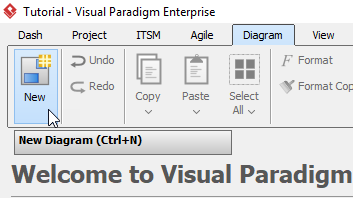
2. Di jendela Diagram Baru, pilih Diagram Sebab dan Akibat (diagram tulang ikan juga dikenal sebagai diagram sebab dan akibat), lalu klik Berikutnya di bagian bawah jendela.
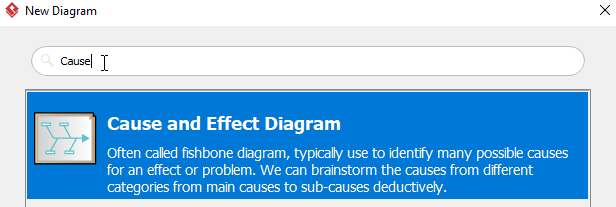
3. Beri nama diagram (misalnya: Kesulitan dalam Menemukan Gambar), lalu klik OK untuk menyelesaikan pembuatan diagram baru.

4. Anda akan melihat sesuatu seperti ini:
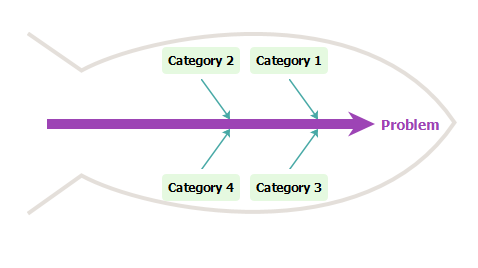
5. Klik dua kali Masalah di sisi kanan diagram, lalu ganti namanya. Dalam hal ini, kita akan menggantinya menjadi Kesulitan dalam Menemukan Gambar.

6. Klik dua kali Kategori1 untuk menggantinya menjadi Man, kemudian klik kanan Man dan pilih Tambah Penyebab Utama dari toolbar untuk membuat penyebab utama baru.
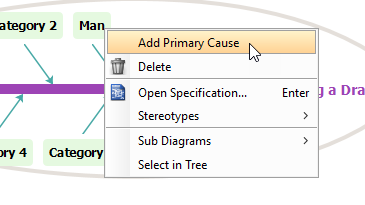
7. Klik dua kali Penyebab dan ganti namanya menjadi Pekerja perpustakaan tidak mendapatkan informasi yang memadai, lalu buat penyebab sekunder dengan mengklik kanan Pekerja perpustakaan tidak mendapatkan informasi yang memadai dan pilih Tambah Penyebab Sekunder.
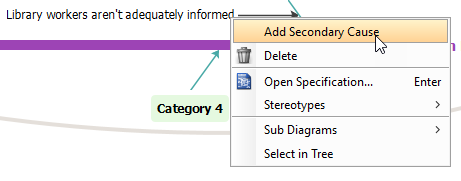
8. Ganti nama penyebab sekunder Penyebab dengan mengklik dua kali.
9. Ulangi langkah 5 hingga 8 di atas untuk membuat lebih banyak penyebab primer dan sekunder.
10. Untuk membuat kategori baru, klik kanan pada ruang kosong di dalam ikan, lalu pilih Tambah Kategori dari bilah alat.
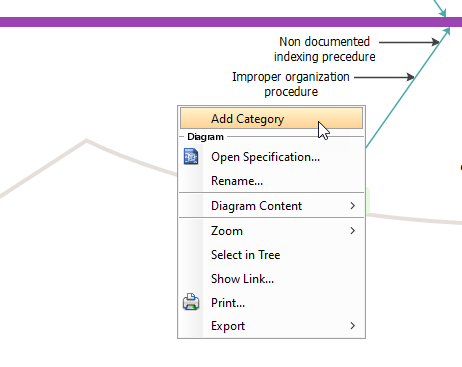
11. Anda akan melihat sesuatu seperti ini ketika Anda menyelesaikan diagram Anda:
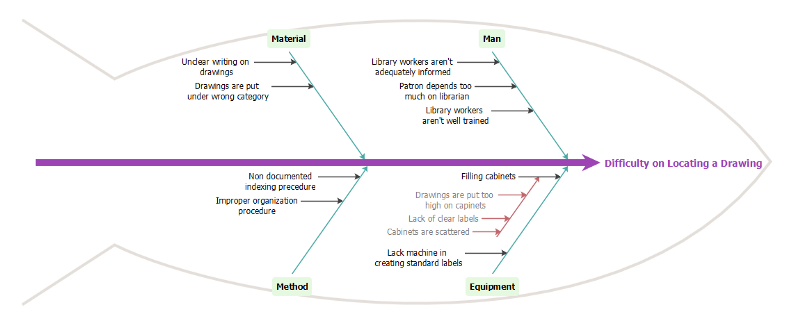
Sumber Daya Diagram Fishbone Lainnya
Bagaimana Cara Membuat Diagram Fishbone? — Visual Paradigm
Alat Diagram Sebab dan Akibat
This post is also available in Deutsch, English, Español, فارسی, Français, 日本語, Polski, Portuguese, Ру́сский, Việt Nam, 简体中文 and 繁體中文.













